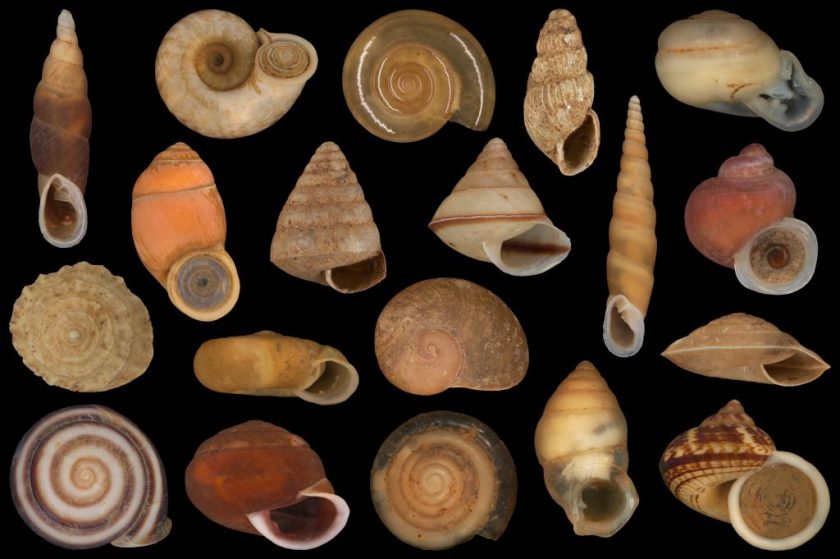Scientists from the Museum für Naturkunde Berlin, as part of an international research team, studied the land snail and slug fauna in northern Vietnam’s Cuc Phuong National Park. The now published findings document an enormous diversity of different gastropod species. Many of them are still undescribed. The collected material, along with the corresponding, digitally accessible data, forms an important basis for further research on the region’s biodiversity.

There is still much to discover in Vietnam’s tropical forests. Cuc Phuong National Park is located in the north of the country, southwest of the capital Ha Noi. In 2019, an international research team, including scientists from the Museum für Naturkunde Berlin, conducted a biodiversity survey of various organism groups in the national park, which is characterised by densely forested limestone hills. The inventory, carried out as part of the German-Vietnamese research and training project VIETBIO, also included the study of the national park’s land snails and slugs. A detailed analysis of this gastropod survey has now been published in the Biodiversity Data Journal.

The publication shows that a total of 116 gastropod species from 23 families were recorded during the survey in the national park. These include millimetre-sized species to fist-sized ones, such with flat, round, or elongated shells, as well as slugs and semi-slugs. “Of the species found, we were unable to assign 47 to any known species; most of them are likely yet undescribed,” explains the study’s lead author, snail researcher Parm von Oheimb from the Museum für Naturkunde Berlin.

In their publication, the authors of the study also summarise previous research on the national park’s land gastropods. On this basis, they could now determine the total number of species recorded from the park at 159. “Many of the snails inhabiting the protected area are only found in this part of northern Vietnam and nowhere else,” adds Katharina von Oheimb, also a snail researcher at the Museum für Naturkunde Berlin. “The comparison with other regions shows that Cuc Phuong National Park is one of the most species-rich tropical forests for terrestrial gastropods studied to date.”

During the almost two weeks of field research, an extensive collection of empty shells and alcohol-preserved specimens has been built up, which allows for further scientific study in future. The collection has been divided and is stored at the Museum für Naturkunde Berlin and the Institute of Ecology and Biological Resources in Ha Noi. Furthermore, for the long-term preservation of tissue samples, for example for molecular genetic studies, corresponding material has been deposited in the tissue collection of the Museum für Naturkunde Berlin.

Detailed collection data, for instance on preservation, identification, sampling locality, and habitat, have been made available in digital and machine-readable format with the publication and are intended to facilitate future research with the material. These also include photographs of live animals taken on location. Moreover, the publication contains numerous photos of the new collection material, including for the first time such created with the DORA station, which was developed in recent years to digitise the mollusc collection of the Museum für Naturkunde Berlin.

The data now published reveal different distribution patterns for the snails and slugs within the national park, which together contribute to the high total number of species. Parm von Oheimb explains: “Not all species are found at the same localities in the park. Some are only present in certain areas and do not co-occur with particular other species. And even species with overlapping distribution areas often inhabit different microhabitats, they are for example rock specialists or ground dwellers.”

The snails were sometimes found in large numbers in the national park. The limestone provides the animals with the calcium they need to build their shells. However, by no means were all gastropod species common. From a significant number, only a few individuals could be found, and from about 15% of the species, only a single specimen each.

Since many snail and slug species in the national park are apparently rare or unevenly distributed, the researchers assume that part of the biodiversity has not been documented in surveys so far. Taking into account the results of a previous survey of the snail fauna as well as their own data, they were able to make a statistical estimate of the total number of gastropod species in the national park. According to this, at least about 184 species of land snails and slugs are expected in the park. This estimate exceeds the total number of currently known species considerably and underlines once again the region’s high biodiversity. Protected areas such as Cuc Phuong National Park are of great importance for its conservation.
Research article:
Oheimb, P.V. von; Sulikowska-Drozd, A.; Dinh, T.D.; Lentge-Maaß, N.; Do, T.V. & Oheimb, K.C.M. von (2025): Terrestrial Mollusca of Cuc Phuong National Park, Vietnam – Results from the 2019 VIETBIO inventory work. Biodiversity Data Journal, 13, e163277. https://doi.org/10.3897/BDJ.13.e163277
Press release originally published by Museum für Naturkunde Berlin. Republished with permission.

































